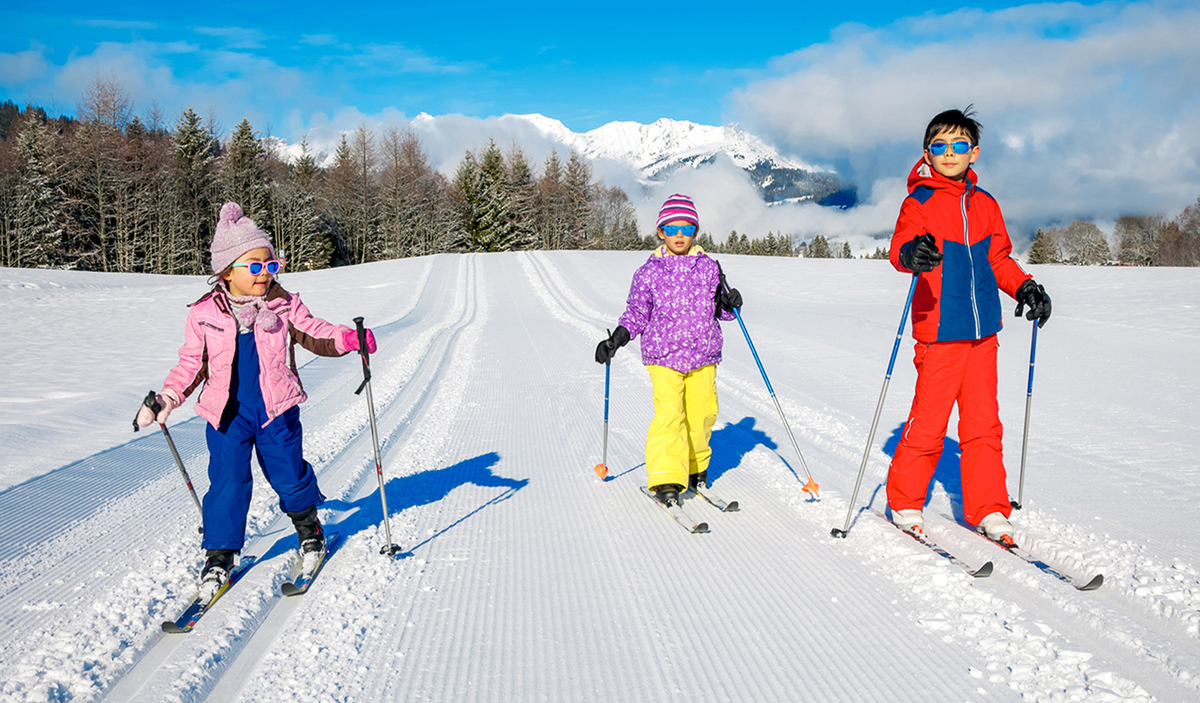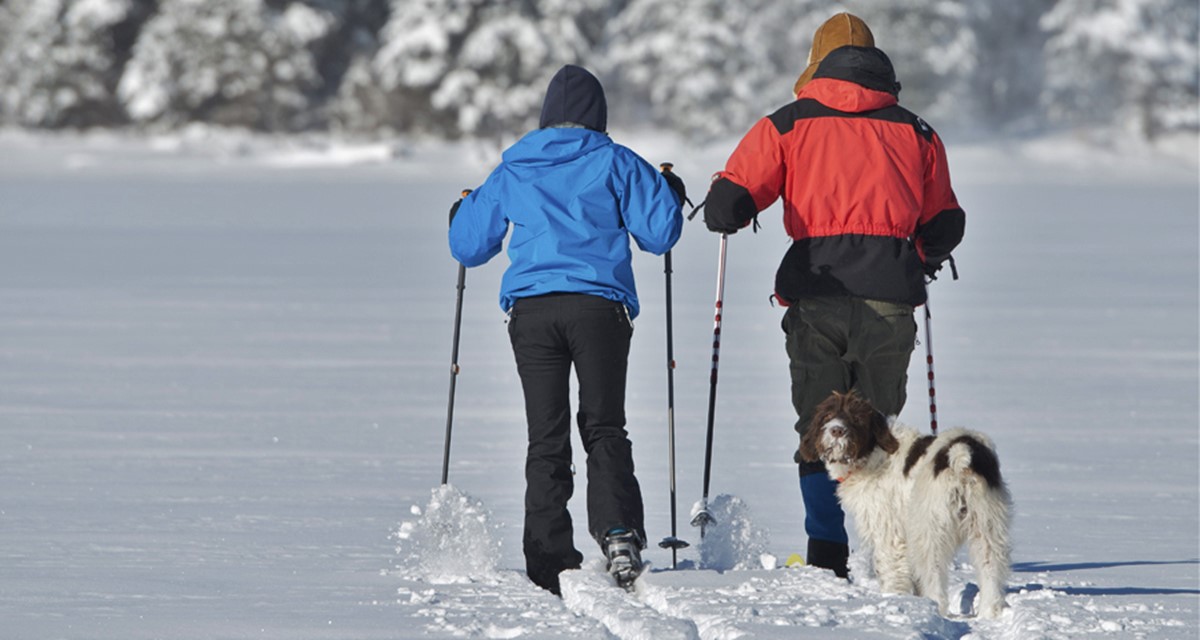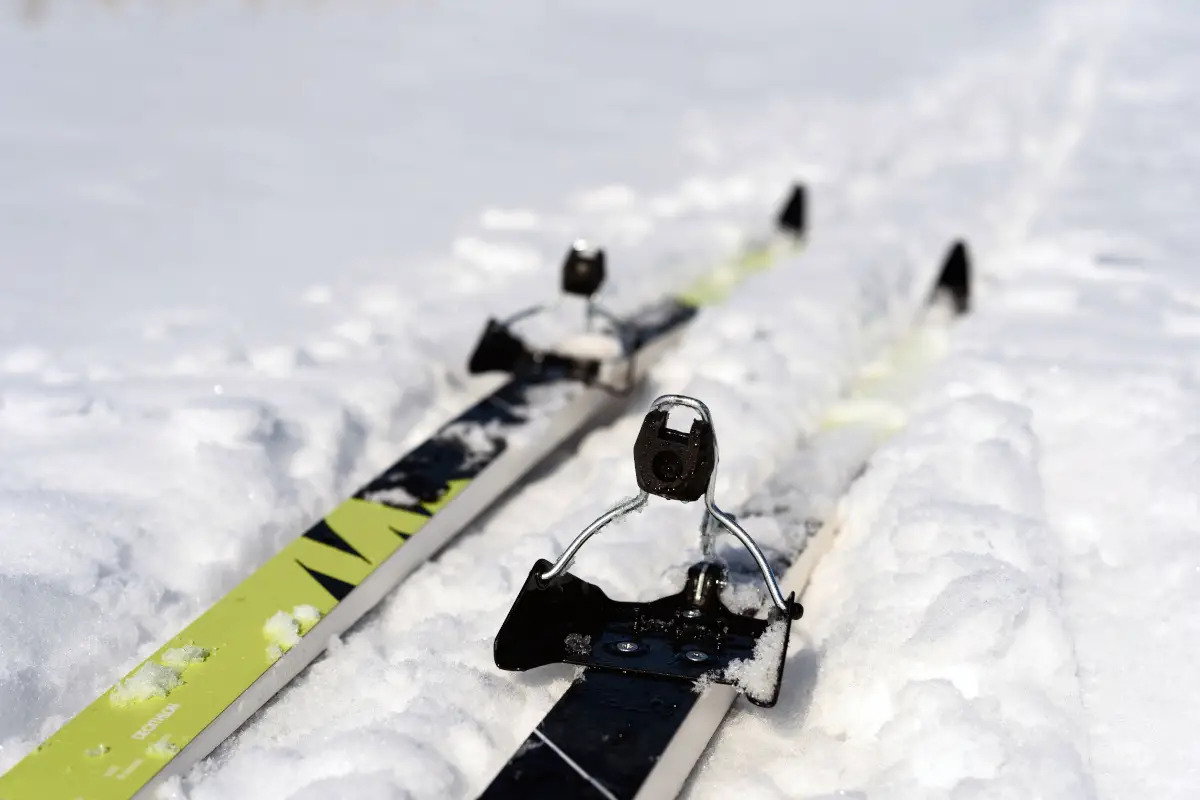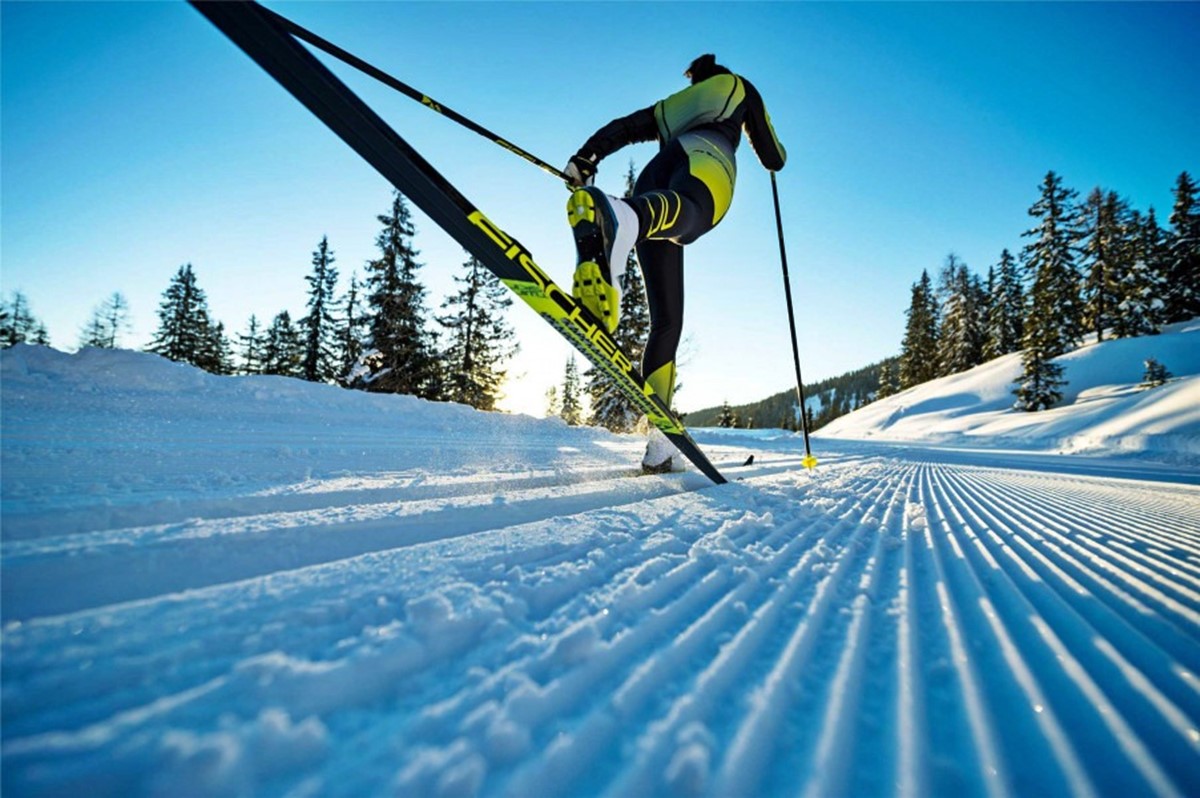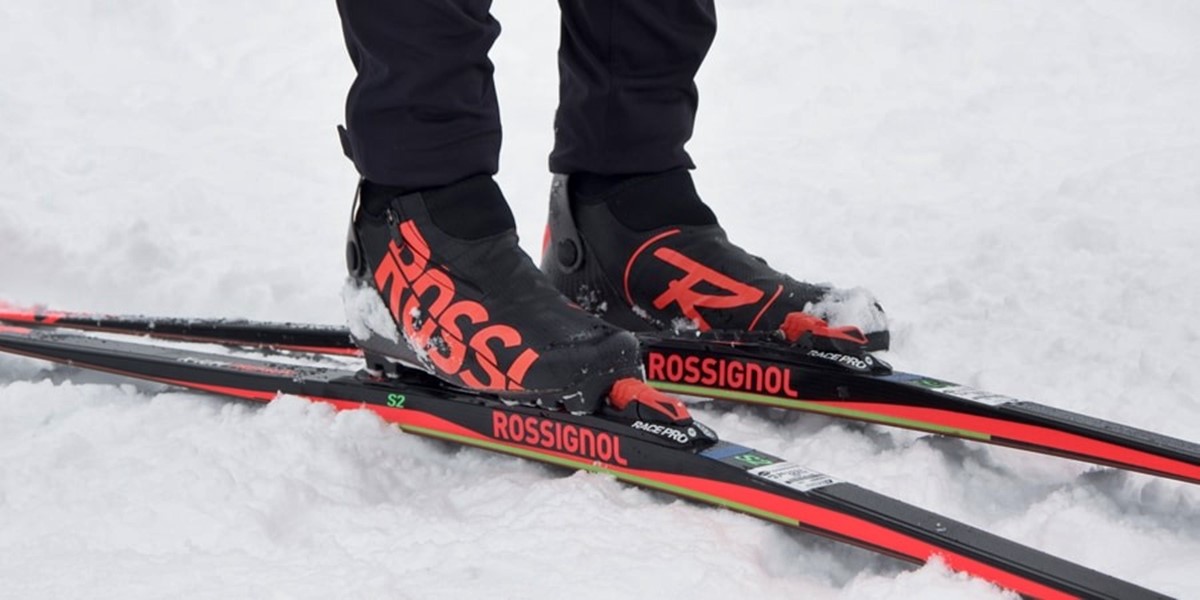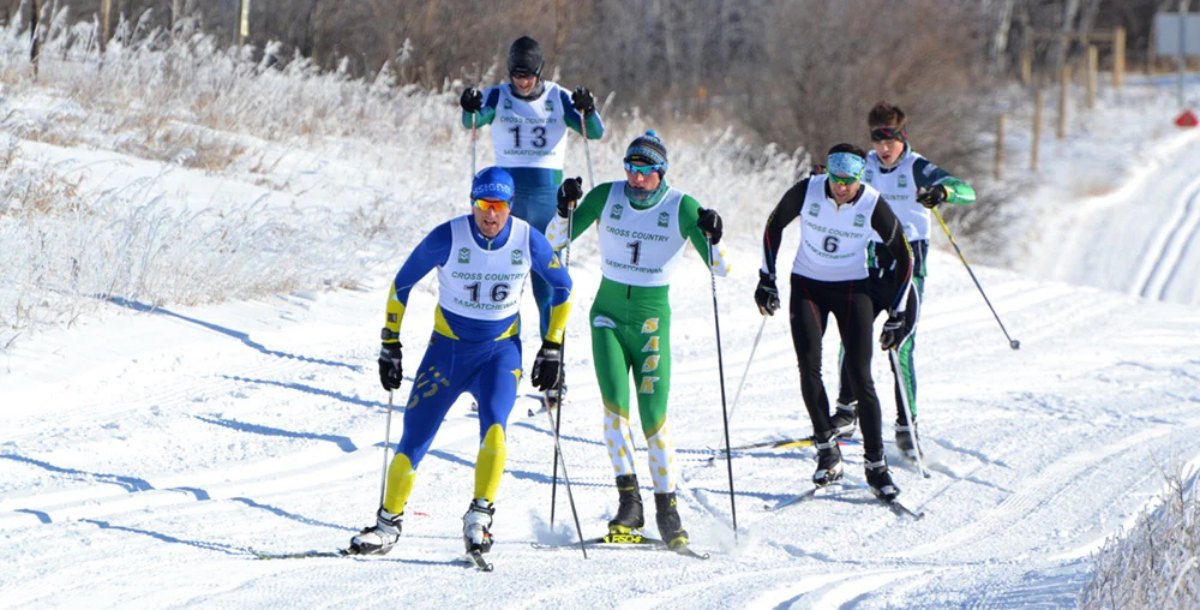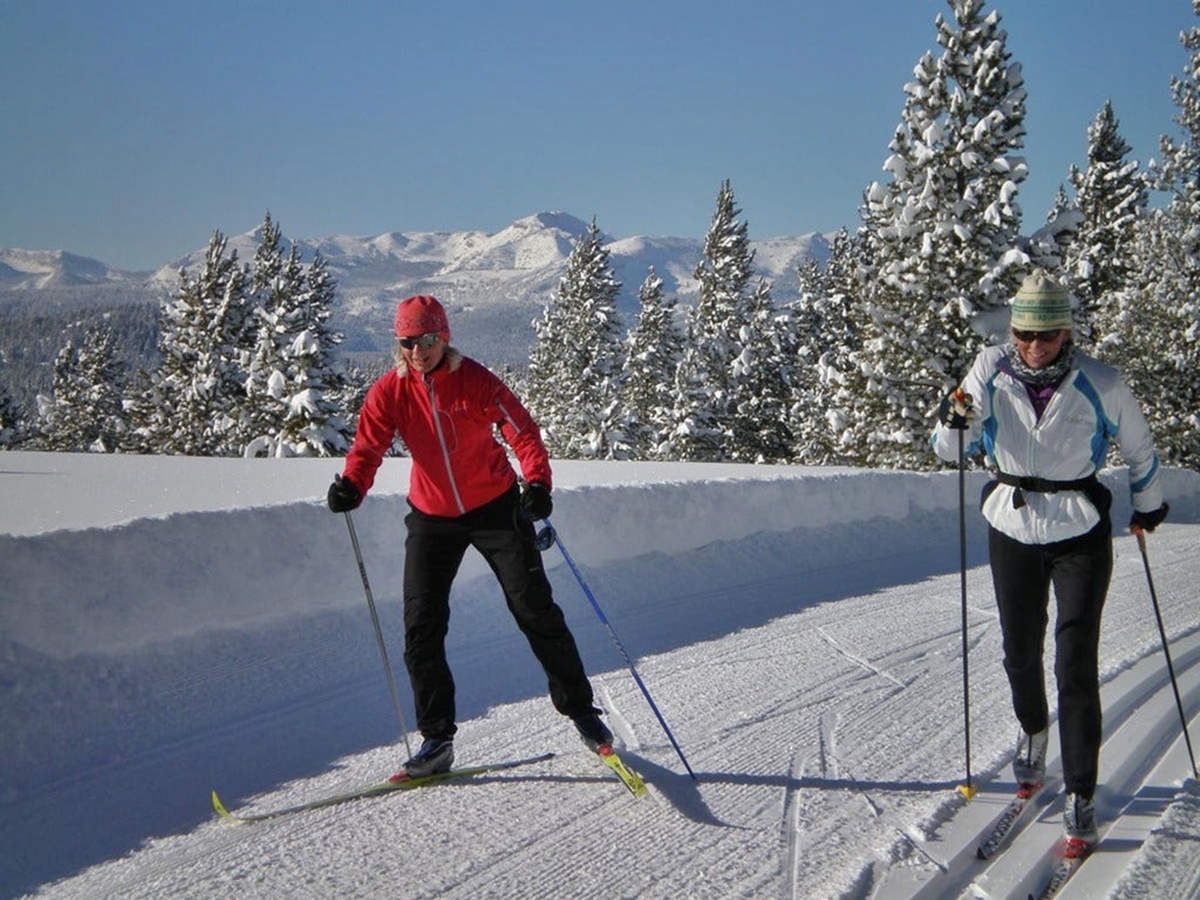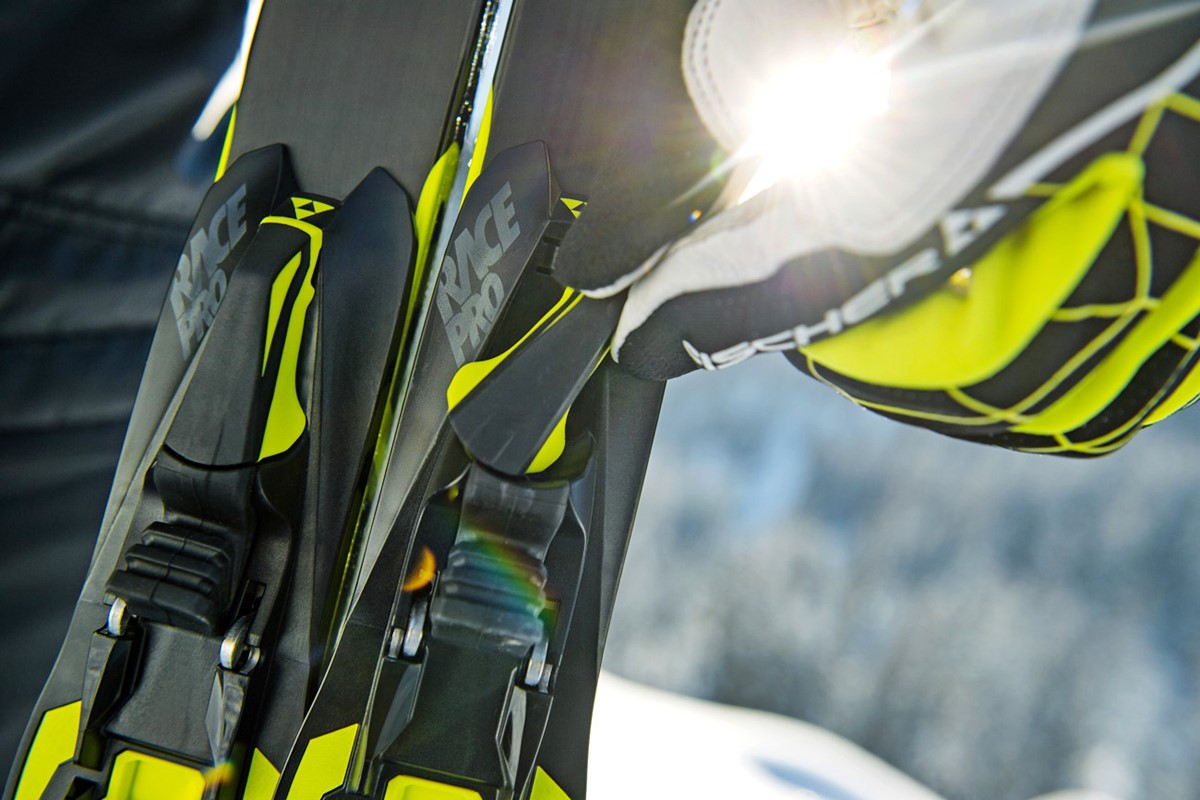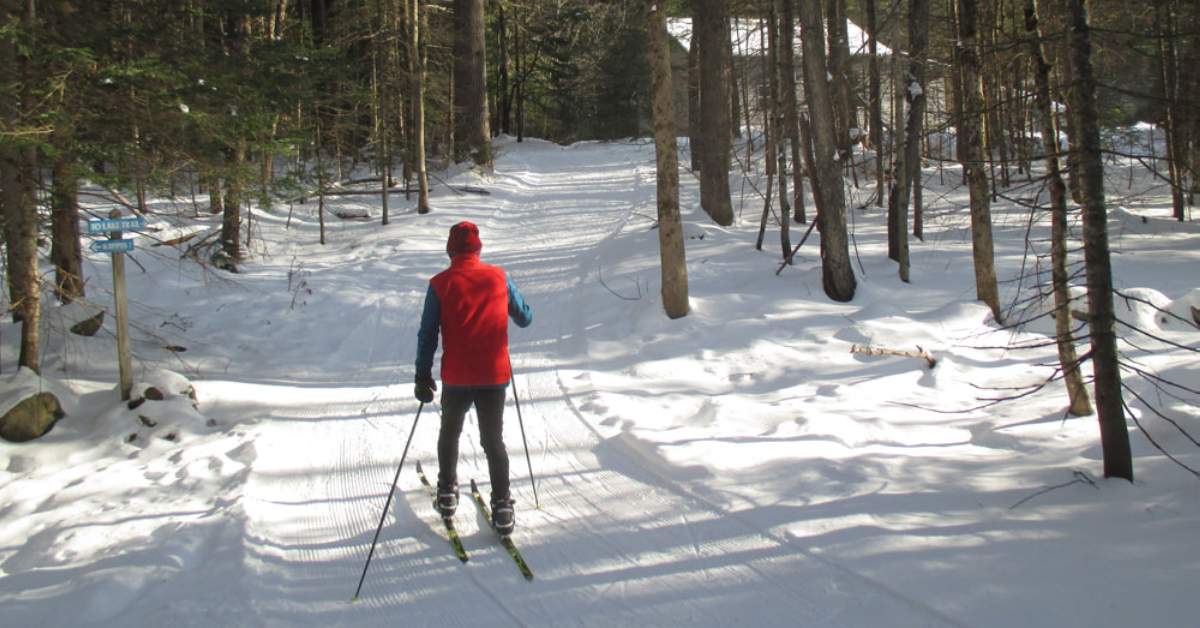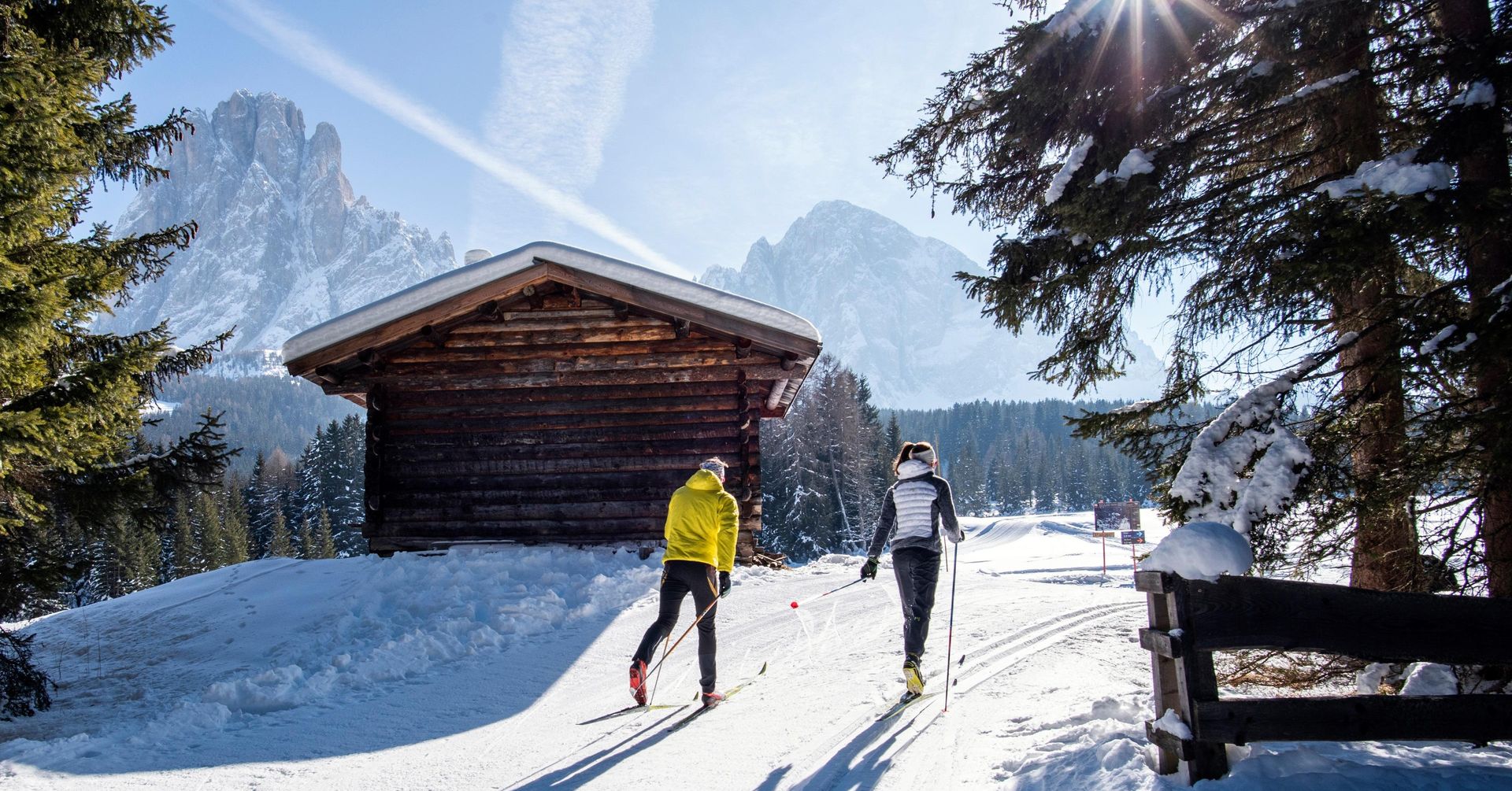

Featured
How To Cross Country Skiing
Modified: August 19, 2023
Learn all about cross country skiing with our featured guide. Discover tips, techniques, and equipment recommendations to become a pro in no time.
Introduction
Welcome to the exciting world of cross country skiing! If you’re looking for an exhilarating outdoor activity that combines physical fitness, breathtaking scenery, and a sense of adventure, then cross country skiing might just be the perfect fit for you. Whether you’re a beginner or have some experience, this guide will provide you with the essential information you need to get started and make the most out of your cross country skiing journey.
Cross country skiing, also known as Nordic skiing, is a popular winter sport that has been enjoyed for centuries. Unlike downhill skiing, which involves skiing downhill on prepared slopes, cross country skiing involves traveling through various types of terrain, including flat surfaces, uphill slopes, and even off-trail areas. It is a full-body workout that engages muscles in your arms, legs, and core, while also providing cardiovascular benefits.
One of the great advantages of cross country skiing is that it can be enjoyed by people of all ages and fitness levels. Whether you are a beginner looking to start a new hobby or a seasoned athlete seeking a challenging workout, cross country skiing offers something for everyone. It’s a fantastic way to connect with nature, escape the hustle and bustle of everyday life, and enjoy the tranquility of the winter landscape.
In this guide, we will provide you with valuable tips and techniques to help you get started with cross country skiing. We will cover everything from choosing the right equipment and clothing, to basic techniques for gliding and striding, as well as uphill and downhill techniques. We will also discuss safety guidelines and precautions to ensure that you have a safe and enjoyable experience on the trails.
So, strap on your skis, feel the crisp winter air on your face, and get ready to embark on an incredible cross country skiing adventure. Whether you’re gliding through a snowy forest or conquering challenging terrain, cross country skiing will never fail to provide you with an exhilarating and rewarding experience. Let’s dive in and discover the excitement that awaits!
Choosing the Right Equipment
When it comes to cross country skiing, having the right equipment is crucial for a comfortable and enjoyable experience on the trails. Here are some key pieces of equipment that you will need:
- Skis: Cross country skis are longer, narrower, and lighter than downhill skis. They are designed for gliding on flat surfaces and varied terrain. The type of skis you choose will depend on your skill level, terrain preferences, and skiing style. Beginners may opt for classic skis, which have a fixed heel and a patterned base for grip. More experienced skiers or those looking for speed may prefer skate skis, which have a free-heel and a smooth base for gliding.
- Bindings: Bindings are the interface between your boots and the skis. They come in different styles and mechanisms, but the most common types are NNN and SNS bindings. Make sure that the bindings you choose are compatible with your boots to ensure a secure and efficient connection.
- Boots: Cross country ski boots provide ankle support and insulation while allowing for flexibility and range of motion. They should fit snugly but not be too tight or uncomfortable. It’s important to try on different boots and find the right fit for your feet.
- Poles: Ski poles are essential for balance and propulsion. They should reach up to your armpits when standing upright. The type of poles you choose will depend on your skiing style and preference. Classic poles are longer and have a larger basket for stability, while skate poles are shorter and have a smaller basket for efficient push-off.
- Wax and Skincare Products: Depending on the snow conditions, you may need to apply wax to the base of your skis to improve glide and grip. Additionally, wearing appropriate skincare products, such as sunblock and lip balm, is important to protect your skin from the harsh winter elements.
When selecting your equipment, it’s always a good idea to consult with a knowledgeable salesperson or an experienced skier who can offer guidance based on your needs and skill level. Renting equipment is also a great option, especially for beginners who are still exploring the sport before making a purchase.
Remember, choosing the right equipment is essential for a comfortable and enjoyable experience while cross country skiing. Take the time to research and try out different options to find the gear that suits you best. With the right equipment in hand, you’ll be ready to hit the trails and embark on your cross country skiing adventure!
Proper Clothing and Gear
When it comes to cross country skiing, wearing the right clothing and gear is essential to ensure your comfort, warmth, and safety on the trails. Here are some key considerations when it comes to dressing for cross country skiing:
- Layering: Layering is key in cross country skiing as it allows you to adjust your clothing based on your exertion level and the weather conditions. Start with a moisture-wicking base layer to keep sweat away from your skin. Add an insulating mid-layer for warmth, such as a fleece or down jacket. Finally, top it off with a windproof and waterproof outer layer to protect you from the elements.
- Headwear: Wearing a hat or a headband is crucial for retaining heat, as a significant amount of heat can be lost through the head. Opt for a hat that covers your ears and provides insulation, or use a headband if you prefer to keep your ears exposed while still protecting your forehead from the cold.
- Gloves or Mittens: Protecting your hands from the cold is essential. Choose gloves or mittens that are insulated and waterproof to keep your hands warm and dry. Consider wearing liner gloves under your main gloves for added warmth and versatility.
- Footwear: Insulated and waterproof boots are a must for cross country skiing. Look for boots that provide ankle support and have a breathable lining to prevent moisture buildup. It’s important to try on different boots and choose a pair that fits comfortably and allows for proper circulation.
- Socks: Opt for moisture-wicking and cushioned socks to keep your feet dry and comfortable. Avoid cotton socks as they retain moisture, which can lead to cold feet. Merino wool or synthetic blends are ideal for cross country skiing.
- Goggles or Sunglasses: Depending on the weather conditions, you may need eye protection. Goggles or sunglasses with UV protection will shield your eyes from the sun’s glare and protect them from wind and debris.
- Backpack: A small backpack can come in handy for carrying essentials such as water, snacks, extra layers, and a basic repair kit. Look for a backpack with adjustable straps and compartments to fit your needs.
Additionally, it’s important to consider other gear such as ski socks, ski straps, and a ski bag for transportation and storage of your equipment.
Remember, dressing appropriately for cross country skiing is essential not only for your comfort but also for your safety. Layers allow you to regulate your body temperature, and waterproof and windproof clothing keeps you dry and protected from the elements. By investing in the right clothing and gear, you can fully enjoy the beauty and excitement of cross country skiing.
Basic Technique and Body Positioning
To enjoy cross country skiing to the fullest, it’s important to master the basic techniques and maintain the correct body positioning. Here are some key aspects to focus on:
- Grip and Glide: In classic cross country skiing, there is a combination of gliding and gripping on the snow. As you push off with one foot, the other foot remains on the snow with the grip wax or pattern providing traction. This allows you to propel yourself forward smoothly.
- Body Position: Maintain an athletic stance with a slight forward lean. This helps with balance and facilitates efficient glide. Keep your core engaged, your shoulders relaxed, and your arms swinging naturally to maintain a fluid and rhythmic motion.
- Stride: The stride in cross country skiing involves proficient diagonal movements of the arms and legs. As you push off with one foot, extend your opposite arm forward, simulating natural arm and leg coordination. This full-body movement helps generate power and momentum.
- Pole Planting: Proper pole planting is crucial for stability and propulsion. As your weight transfers to the glide ski, plant the pole firmly in the snow at a 45-degree angle in front of your body. Use your core and upper body to drive the pole into the snow, providing a powerful push-off.
- Balance and Weight Shift: Finding and maintaining your balance is essential in cross country skiing. Shift your weight from one ski to the other as you glide and stride, using the edges of your skis for stability. This allows you to maintain control and maneuver through different terrain.
- Relaxation and Fluidity: It’s important to maintain a relaxed and fluid motion while skiing. Tension and rigidity can inhibit your technique and efficiency. Focus on a smooth and natural rhythm, allowing your body to flow with the motion of the skis.
It’s worth noting that mastering these techniques takes practice, so don’t be discouraged if you don’t get it right away. Take your time to familiarize yourself with the movements and gradually build up your skill and confidence on the trails. Consider taking lessons or skiing with more experienced skiers to learn from their expertise and refine your technique.
Remember, proper technique and body positioning not only improve your performance but also reduce the risk of injuries. By focusing on these fundamentals, you’ll be well on your way to becoming a proficient cross country skier and maximizing your enjoyment on the trails.
Starting and Stopping
Knowing how to start and stop properly is essential for a successful and safe cross country skiing experience. Here are some techniques to help you get started and come to a controlled stop:
- Starting Technique: To start moving on flat terrain, begin with your skis parallel to each other. Place one foot slightly ahead of the other and transfer your weight onto the back foot. Push off with your back foot, gradually transferring your weight to the front foot as you glide forward. As you gain momentum, find your rhythm and continue with the gliding and striding technique.
- Stopping Technique: When it comes to stopping, the snowplow or wedge technique is commonly used in cross country skiing. To execute the snowplow, widen your feet and point the tips of your skis inward while keeping your knees slightly bent. Apply gentle pressure with your inner edges to create friction and gradually slow down. You can also use your poles for added stability and braking power, by planting them firmly in the snow to create extra resistance.
- Snowplow Turning: To make turns using the snowplow technique, shift your weight to the foot on the side you want to turn. Widen your stance, point the tips of your skis inward, and apply gentle pressure with the inner edges of your skis. This will cause your skis to carve a wider arc, allowing you to smoothly change direction. Use your poles for balance and stability throughout the turn.
- Herringbone Technique: The herringbone technique is used for ascending uphill slopes. Place your skis shoulder-width apart and angle them outward in a V shape. Transfer your weight to the inner edges of your skis and push down and outwards, creating an anchor on the snow. This will help you maintain traction and prevent sliding backward as you ascend.
Remember, practice makes perfect, and it’s important to familiarize yourself with these techniques before venturing onto more challenging terrain. Take your time to master the starting and stopping techniques in a controlled environment so that you feel confident and comfortable on the trails.
By learning these starting and stopping techniques, you’ll be able to navigate the trails with ease and enjoy a safe and enjoyable cross country skiing experience.
Gliding and Striding
Gliding and striding are the fundamental techniques in cross country skiing that allow for efficient and graceful movement on the snow. These techniques require coordination and proper weight transfer. Here’s how to master gliding and striding:
- Gliding Technique: The gliding technique involves transferring your weight from one ski to the other as you move forward. As you push off with one ski, transfer your weight onto the glide ski and allow it to slide smoothly on the snow. Keep your skis parallel and slightly wider than hip-width apart. Bend your knees and lean slightly forward to maintain balance and facilitate gliding.
- Striding Technique: The striding technique is the motion used to propel yourself forward in cross country skiing. It involves a coordinated movement of the arms and legs. As you push off with one foot, simultaneously swing the opposite arm forward. This helps generate momentum and maintain balance. Alternate legs and arms in a rhythmic motion, focusing on a smooth and fluid stride.
- Pole Timing: Coordinating your pole timing with your stride is critical in cross country skiing. As your leg extends forward during the striding motion, plant your pole firmly in the snow slightly behind your binding. Apply pressure to the pole as you transfer your weight onto the glide ski and push off. The pole plant and push-off should be timed in sync with each stride.
- Double Poling: Double poling is a technique used on flat or gentle downhill sections to maximize speed and power. It involves using both poles simultaneously to propel yourself forward. Plant your poles firmly in the snow and push off while simultaneously transferring your weight onto the glide ski. Coordinate the double poling motion with your leg stride to maintain a consistent rhythm.
- Efficient Arm Movement: Proper arm movement is essential for effective gliding and striding. Keep your arms relaxed and swing them naturally in coordination with your leg stride. Allow your arm swing to come from your shoulder joint rather than your elbow. This will help generate momentum and rhythm without expending unnecessary energy.
It’s important to remember that gliding and striding require practice and coordination. Start by mastering each technique separately, then gradually integrate them until they become fluid and natural. Taking lessons or skiing with more experienced skiers can be beneficial in honing your gliding and striding skills.
By focusing on these techniques, you’ll be able to glide effortlessly across the snow, maximize your efficiency, and enjoy the beauty of cross country skiing to the fullest.
Turning and Shifting Weight
Turning and shifting your weight properly is essential in cross country skiing to navigate corners and change direction smoothly. Here are some techniques to help you master turning and shifting your weight effectively:
- Weight Transfer: Shifting your weight is crucial for balance and control while turning. To initiate a turn, shift your weight onto the ski you want to turn with. This will allow the ski to dig into the snow and carve the turn more effectively. As you shift your weight, maintain a slight forward lean and keep your body aligned with the direction of the turn.
- Edging: Edging refers to angling your skis to control your direction while turning. As you shift your weight onto the turning ski, apply pressure to the edge of the ski in the direction you want to go. This will help you maintain control and grip on the snow, creating a smoother turn. Remember to maintain a balanced and centered stance to avoid catching an edge.
- Timing: Timing is crucial in executing turns effectively. Shift your weight onto the turning ski early in the turn to initiate the movement smoothly. As you progress through the turn, continue to shift your weight slightly to maintain control and flow. Practice coordinating your weight shift with each turn, gradually increasing your speed and fluidity.
- Kick Turn: A kick turn is a technique used to change direction in tight or narrow spaces. To perform a kick turn, come to a complete stop and lift one ski off the ground. Rotate your body and skis in the desired direction, using your poles as anchors for balance. Place the lifted ski down and transfer your weight onto it, allowing the other ski to follow. This technique requires practice and balance.
- Step Turns: Step turns are useful for maneuvering through steep or challenging terrain. As you approach a turn, step one ski forward in the desired direction while pivoting your body. Plant your poles firmly in the snow for stability and balance. Transfer your weight onto the leading ski and allow the trailing ski to follow naturally, completing the turn. This technique allows for quick and controlled navigation in difficult terrain.
Remember, mastering turning and shifting your weight takes practice and experience. Start with gentle turns on flat terrain and gradually progress to more challenging slopes. Work on your balance and weight distribution to improve your technique and fluidity.
By becoming proficient in turning and shifting your weight, you’ll have the confidence and control needed to tackle various terrains and enjoy the exhilarating experience of cross country skiing.
Uphill and Downhill Techniques
Mastering uphill and downhill techniques is crucial for maintaining momentum, control, and safety while cross country skiing on varied terrains. Here are some techniques to help you navigate uphill and downhill sections:
- Uphill Technique: When ascending uphill slopes, it’s important to maintain a steady pace and conserve energy. Use the herringbone technique, which involves placing your skis in a V shape and pushing outwards with your edges for traction. Lean slightly forward and maintain a consistent rhythm, using your poles for balance and propulsion. Shorten your stride and focus on a powerful push-off with each step.
- Switchbacks: In more challenging uphill terrain with sharp turns, switchbacks can be employed. When approaching a switchback, come to a complete stop or slow down significantly. Using the kick turn technique, lift one ski and pivot your body and skis to face the opposite direction. Plant your poles for balance and transfer your weight to the turning ski, allowing the other ski to follow. This technique allows for efficient navigation through tight turns on steep slopes.
- Downhill Technique: When descending downhill slopes, it’s important to maintain control and balance. Keep your weight centered and leaning slightly back to maintain stability. Use the snowplow or wedge technique by pointing the tips of your skis inward, widening your stance, and applying gentle pressure with your inner edges to slow down. Lean into the turn and use your poles for balance and direction. Be cautious of your speed and adjust your technique accordingly based on the slope gradient and snow conditions.
- Descending Steeper Hills: When skiing down steeper hills, the snowplow technique may not provide sufficient control. In this case, the telemark turn can be used. As you turn, bend your outside knee and lower your body into a lunge-like position. Keep your weight forward and centered to maintain balance and control. Use your poles for stability and direction, and practice this technique on less challenging slopes before attempting it on steeper hills.
- Managing Speed: Controlling your speed is crucial during downhill skiing. To manage speed, make wider turns and use a wider snowplow or wedge position. Additionally, leaning back and applying more pressure with the inner edges of your skis can help slow you down. Regularly check your speed by making deliberate turns and adjust your technique accordingly to maintain a comfortable and controlled pace.
Remember, uphill and downhill techniques require practice and experience. Start with gentle slopes and gradually progress to steeper terrain as you become more comfortable and confident in your abilities. Additionally, always be aware of your surroundings, be cautious of obstacles, and adjust your technique based on the specific conditions of the trail.
By mastering uphill and downhill techniques, you’ll be able to tackle a variety of terrains with grace, confidence, and maximum enjoyment.
Tips for Efficient Cross Country Skiing
Efficiency is key when it comes to cross country skiing. Here are some tips to help you improve your technique, maximize your performance, and have a more enjoyable skiing experience:
- Stay Flexible and Relaxed: Maintain a relaxed and fluid body position while skiing. Avoid tensing up or locking your muscles, as this can hinder your movements and efficiency. Stay flexible and allow your body to move naturally with the motion of the skis.
- Breathe Properly: Proper breathing technique is important to ensure sufficient oxygen flow to your muscles. Breathe deeply and rhythmically, inhaling through your nose and exhaling through your mouth. Focus on maintaining a steady breathing pattern that is synced with your movements.
- Focus on Core Engagement: Engage your core muscles to stabilize your body and provide power for each stride. A strong core will help you maintain balance and transfer energy efficiently from your upper body to your lower body. Incorporate core-strengthening exercises into your training routine to improve your skiing performance.
- Build Your Endurance: Cross country skiing is a physically demanding sport that requires endurance. Incorporate cardiovascular exercises such as running, cycling, or swimming into your training routine to build your endurance and enhance your skiing stamina.
- Practice Cross Country Skiing-Specific Exercises: Incorporate exercises that mimic the movements and muscle groups used in cross country skiing. Lunges, squats, and step-ups can help strengthen your legs and improve your balance. Incorporate upper body exercises such as rowing or resistance band pulls to build strength in your arms and improve your pole planting technique.
- Focus on Proper Timing: Strive for proper timing and coordination between your arm and leg movements. Practice syncing your strides with your pole planting to maximize your power and efficiency. Remember, timing is key to achieving a smooth and fluid skiing motion.
- Hydrate and Fuel Properly: Stay hydrated by drinking water before, during, and after skiing. Pack nutritious snacks such as energy bars, fruits, and nuts to fuel your body and maintain energy levels while on the trails. Remember to take breaks to refuel and hydrate as needed.
- Take Lessons or Join a Skiing Group: Consider taking lessons or joining a cross country skiing group or club. Learning from experienced skiers or skiing with others can provide valuable insight, guidance, and motivation. It also gives you an opportunity to practice and improve your skills in a supportive and social environment.
- Listen to Your Body: Pay attention to your body and take breaks when needed. Allow yourself to rest and recover to prevent exhaustion or potential injuries. Be mindful of any discomfort or pain and adjust your technique or seek assistance if necessary.
- Enjoy the journey: Finally, remember to enjoy the process of cross country skiing. Embrace the beauty of nature, the serenity of the trails, and the sense of accomplishment as you glide through the snow. Find joy in the journey and appreciate every moment on your skis.
By incorporating these tips into your cross country skiing routine, you’ll be able to improve your technique, enhance your efficiency, and elevate your skiing experience. Remember that practice and perseverance are key to mastering the sport, so keep exploring and enjoy the wonders of cross country skiing!
Safety Guidelines and Precautions
Prioritizing safety is crucial when participating in any outdoor activity, including cross country skiing. Here are some important safety guidelines and precautions to keep in mind:
- Check Weather Conditions: Before heading out, check the weather forecast and trail conditions. Avoid skiing in severe weather conditions, such as heavy snowfall, freezing rain, or strong winds.
- Know Your Limits: Be aware of your skill level and choose trails and terrain that are suitable for your ability. Start with shorter and easier routes before progressing to more challenging ones.
- Stay on Marked Trails: Stick to marked cross country skiing trails to ensure your safety. Venturing off-trail can lead to hazardous conditions, including hidden obstacles or unstable snow.
- Share Your Plans: Always let someone know your skiing plans, including the trail you’ll be on, estimated duration, and expected return time. This way, if anything goes wrong, help can be summoned promptly.
- Carry Essential Safety Gear: Bring along essential safety gear, including a map of the area, a compass, a whistle, a headlamp, and a small first aid kit. These items can help you navigate, signal for help, and address minor injuries on the trail.
- Dress Appropriately: Dress in layers and wear moisture-wicking, insulating, and waterproof clothing. Protect your extremities by wearing proper gloves, socks, and a hat. Apply sunscreen to exposed skin, even on cloudy days, to protect against harmful UV rays.
- Stay Hydrated and Nourished: Drink plenty of water and pack energizing snacks such as granola bars or trail mix. Staying hydrated and nourished will help maintain your energy levels and prevent fatigue or hypothermia.
- Follow Trail Etiquette: Yield the right of way to other skiers, snowshoers, or winter hikers on the trail. Practice proper trail etiquette, including avoiding excessive noise, respecting wildlife, and packing out any trash.
- Be Mindful of Wildlife: Cross country skiing often takes place in natural environments, so be respectful of wildlife and their habitats. Observe wildlife from a distance, avoid disturbing their habitats, and follow any specific guidelines or regulations regarding encounters with wildlife in the area.
- Be Prepared for Emergencies: Familiarize yourself with basic first aid and wilderness survival skills. Carry a fully charged cell phone, but also be aware that some remote areas may not have cell reception. In case of emergencies, know the appropriate steps to take to stay safe and find help.
By following these safety guidelines and exercising caution, you can reduce the risk of accidents and ensure an enjoyable and safe cross country skiing experience. Remember that the safety of yourself and others should always be a top priority.
Conclusion
Cross country skiing is a remarkable outdoor activity that offers a unique combination of physical fitness, breathtaking scenery, and a connection with nature. Whether you’re a beginner or a seasoned skier, there are endless opportunities for exploration, challenge, and enjoyment on the trails.
In this comprehensive guide, we discussed essential topics such as choosing the right equipment, dressing appropriately, mastering basic techniques, and ensuring safety. By selecting the appropriate skis, boots, and clothing, you can experience comfort and protection while gliding through snowy landscapes. Understanding and practicing proper techniques for starting, stopping, turning, gliding, and shifting weight will improve your efficiency and grace on the trails.
Remember to prioritize safety by checking weather conditions, skiing on marked trails, and carrying essential safety gear. Stay hydrated, fueled, and dress appropriately to maintain optimal performance and protection against the elements. Adhere to trail etiquette and respect the environment and wildlife.
Cross country skiing is not just a sport; it’s a journey of self-discovery amidst nature’s beauty. So, strap on your skis, explore new trails, and embrace the thrill of gliding through winter wonderlands. Whether you seek an invigorating workout, tranquility amidst nature, or the joy of shared experiences with fellow skiers, cross country skiing has something for everyone.
So go ahead, embrace the challenge, and embark on an exhilarating cross country skiing adventure. Let the serene winter scenery and the physical exertion lead you to new heights of enjoyment. It’s time to make your tracks in the snow and create unforgettable memories on the trails. Happy skiing!
